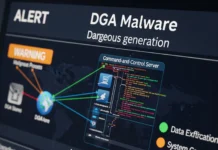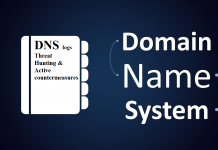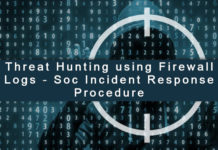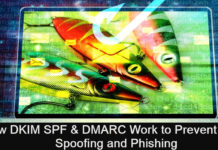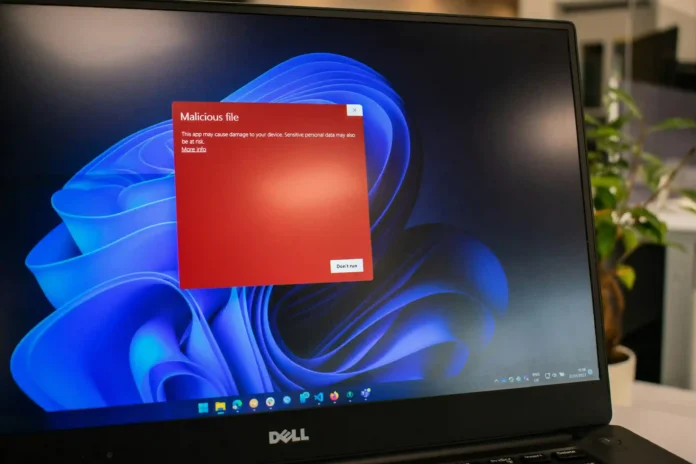Fighting the good fight in the dynamic battlefield that is cyber security, one needs a mix of leading edge technology, expert analysis, and actionable intelligence in order to better protect the organization. One of the most important weapons in this arsenal is malware sandboxing that shelters and examines shady files and behavior in a safe environment. This process provides forensically-rich information of how the malware operates, which helps threat intelligence analysts find, comprehend, and respond to threats faster. One of the market leaders in this space is VMRay, which has built a solution to provide highly-accurate and detailed malware analysis to security practitioners.
This article will cover how malware sandboxing is the backbone to any threat intelligence and analysis effort, and it will showcase how VMRay provides unique value and capabilities to cybersecurity operations today.
The Emergence of Malware and the Requirements for More In-Depth Analysis
Cyber-attacks continue to evolve and, as digital systems become increasingly interconnected and intricate, cyber adversaries continue to innovate new attack methodologies. Malicious software has grown in complexity using tactics as polymorphism, encryption and evasion to sandbox to avoid classic security defenses. Traditional antivirus tools remain useful, but the reality is that they simply cannot cope with all of the polymorphic or previously unseen threats.
Based on this, the role of dynamic analysis, i.e., the execution of suspicious code is magnified, as its behavior can be observed in a safe environment. Malware sandboxing is important in this respect, and allows security analysts to capture real-time behavior, which static methods are incapable of detecting.
“Without it organizations would either miss key indicators of attacks, or would need to look at so much that they would routinely be overloaded with the task of determining whether or not malicious software is intentional and going to be damaging in some way.” As a result, the successful analysis of malware is the keystone of effective threat intelligence generation and proactive defense tactics.
What Is Malware Sandboxing?
Malware sandbox is used to execute a malicious file or program in an isolated/virtualized environment and watch its behavior without infecting the real systems. The virtual sandbox is an emulation of real endpoint or network so the malware can run the same way as it does on an actual device.
The sandbox collects rich telemetry during the execution: system calls, files/registry changes, network traffic, process creation, and even screenshots of UI changes. All of this information together provides clear insight into the malware’s purpose and its functionality.
The main benefit of such a sandbox is that it reveals behaviors which are orthogonal to the static code analysis, like unpacking the payload during run time, delayed execution or C&C communication. This visibility is absolutely essential for threat intelligence teams that are responsible for discovering new threats and creating protection against them.
Introducing VMRay: Elevating Malware Sandboxing
Among the many sandboxing solutions available, VMRay has gained prominence due to its innovative technology and comprehensive analysis capabilities.VMRay stands out with its hypervisor based method, which tracks malware behavior from the outside of the guest OS.
There are several significant advantages with this structure. First, it essentially renders the sandbox invisible to malware looking to avoid being analyzed. Most sophisticated modern malware has checks to see what type of environment they are in and if it’s a sandbox then it might go to sleep so no damage is done. By external monitoring of VMRay’s, the evasion mechanisms are defeated, thus revealing the malware’s actual behavior.
The second one comes with VMRay, the detailed, granular, machine-readable and human-friendly reports. These reports describe badness, salient data points, network observables, etc;in short – the context that analysts need to rapidly grok the nature of the threat in question.
Lastly, VMRay easily connects into other security solutions, allowing for automated workflows that enhance incident response and threat hunting productivity.
How Malware Sandboxing Supports Threat Intelligence
Threat intelligence is a formalized way to collect and analyze information about adversaries to help an organization understand the motivations, tactics, and infrastructure of those that may be looking to do harm. The rich behavior data of malware from malware sandbox can offer intelligence directly.
Observations from the Sandbox When it comes to sandbox-based insight, threat intelligence
Teams are able to: Monitor endpoint behavior in a tamper-proof environment by observing activities during execution with a sandbox To observe activities when a file is sent to the endpoint and when it is running, an organization can record events occurring without interference in a sandbox.
Identify Indicators of Compromise (IOCs): File hashes, network domains/IP addresses, and artifacts produced by the malware as it runs in a sandbox environment are compared in order to create IOCs for detection and block lists.
Teach TTPs: The sandboxing will tell you what types of things malicious code is doing like process injection, privilege escalation, lateral movement so analysts can map those to what an attacker did.
Look for Another Evolution of Malware: At the sandbox level, mutations and newer versions of malware are caught all the time, updating your threat intelligence.
Attribution and campaign analysis support : By identifying behaviours, sandboxing can aid the correlation of malware to known actors or campaigns to provide defenders with strategic context.
Advanced Detection Capalities: Sandbox data is utilized to validate security while supporting more complex signature and heuristic based detection.
VMRay’s capabilities in accurate, high-coverage behavior information play a major role in promoting these initiatives and are a necessary part of any effective threat intelligence solution in practice today.
Accelerating Incident Response and Forensics
When there is a security incident, speed is critical. Malware sandboxing enables security incident responders to rapidly comprehend the threat by providing automated deep-dive analysis for the suspicious files.
VMRay’s offering automates many aspects of the analysis, as a result, reduces dependency on manual investigation allowing analysts to prioritize response more efficiently. Its patient reports make it easy to understand malicious activity, from file system modifications to network traffic, so responders can follow the malware’s trail and see which of their systems was compromised.
Additionally, the forensic data produced by sandboxing assists post-incident inquires, compliance needs and legal actions by providing proof positive of malware behavior.
Integration with Security Ecosystems
Smoothly combining different tools and data sources is crucial for any successful cybersecurity strategy. VMRay has robust APIs and connectors to make its sandboxing data available in Security Information and Event Management (SIEM) systems, Endpoint Detection and Response (EDR) solutions and Threat Intelligence Platforms (TIP).
This interoperability allows for automated workflows in which suspected malicious files seen at network edge or email gateways are automatically forwarded to VMRay’s sandbox for analysis. Alerts and rich intelligence are then sent back to SOCs in security operations centers for further analysis.
This process automation minimizes the burden on analysts, and increases speed and efficiency of threat detection and response, improving security posture.
Addressing Challenges of Evasive Malware
Malware authors use many evasion techniques of behavior to avoid sandbox detection and hide from the analysis of malicious behavior. These may involve looking for a virtual machine evidence, postponing execution, or asking for specific human interventions.
Meanwhile, for such evasions, conventional sandboxes are usually unable to reveal which behaviors are performed by the malware. VMRay addresses this by way of hypervisor-level monitoring and analysis, combined with advanced detection. What VMRay does, is monitoring the malware from outside of the virtual environment, the malware simply does not know VMRay is watching and gets the natural behaviour.
Furthermore, VMRay is constantly enhancing its technology to stay ahead of new evasion techniques, which means organisations relying on the VMRay platform are at reduced risk of being blindsided by elusive threats.
Enabling threat hunting and pro-active defence
Threat hunting is a proactively looking for threats (or signs of compromise, etc) that have evaded detection. Malware sandboxing also enhances threat hunting by offering specific behavioral signatures and behaviors observed as actual malware ran.
With VMRay, threat hunters have a library of data that aids us in building hypothesis and search criteria for detecting activity in our environments. The sandbox’s Together contextual reports simplify the process of linking alerts, detecting outliers, and finding hidden pathways.
This proactive process not only identifies attacks earlier, but continually reinforces organizational resilience as it enhances its defenses with knowledge of real-world malware.
Supporting Collaborative Cybersecurity Efforts
Co-opetition is alive and well in cybersecurity. By sharing the threat intelligence with partners, industry bodies, and governmental institutions as well, we build a common defense mechanism against the new threats.
To enable this collaboration, VMRay provides standardized, detailed reports that can be safetly shared across teams and organizations. These notifications contribute to strengthening the credibility and usefulness of shared intelligence, as well as facilitating trust and the added value derived from intelligence sharing.
This kind of collaboration is essential to battling both ransomware campaigns and nation-state attacks that stretch across various sectors and geographies.
Conclusion
Malware sandboxes have become a crucial weapon in the war on ever-evolving cyber security threats. Through the focused execution of suspicious code within a safe environment, sandboxing provides a unique understanding of threat logic and intentions not easily uncovered by static analysis—a fundamental aspect of our seamless threat intelligence, incident response, and pre-emptive defense.
VMRay demonstrates the future of malware sandboxing technology. This, combined with hypervisor-based monitoring, robust reporting, and integration, delivers the visibility and automation security operations need to stay ahead of the next threat. By integrating malware analysis with their security infrastructure and personnel expertise, businesses can strengthen and expedite their threat intelligence generation and analysis.
In an environment where cyber time is measured in seconds, it is not possible to wait for human intervention to have systems protect themselves ‚ advanced sandboxing capabilities like VMRay are no longer an option, they are a requirement to create an effective and resilient defense strategy.”





